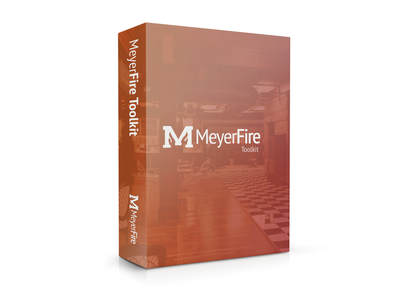|
There's a varying degree of specifications out there - but I've never really seen it openly discussed or defended.
Some organizations (such as military, many healthcare clients) require schedule 40 for pipe 1 through 2 inches in diameter. Some engineers hardly compile specifications and place no requirements on the pipe thickness. Some projects only allow schedule 40 or even schedule 80. If you're an engineer, what is your basis for recommending different pipe thicknesses for different clients? Is corrosion the only reason why the thicker pipe diameter is specified for your clients? Would be really interested in understanding the reasoning (one way or another) for specifying different pipe thicknesses on suppression systems. Thanks in advance. Posted anonymously for discussion. Discuss This | Submit Your Question | Subscribe
5 Comments
We specify minimum schedule 10 for grooved piping, and schedule 40 for threaded. With roll groove fabrication, schedule 10 piping has higher CRR (corrosion resistance ratio) than threaded schedule 40, so it should provide an adequate protection against normal corrosion.
Reply
Matthew King
9/10/2019 11:20:42 am
ASME B31 code methods, e.g. B31.3
Reply
☼
9/10/2019 11:29:37 am
System design is based on the clients needs and corrosion tends to be a big factor. The Fire sprinkler podcast that has a few segments that hit this topic really well. Go to the April 14, 2019 episode and skip to 27:35. They talk about system components based on client needs regarding expected longevity of the system and pipe thickness. Also go to the Jan 24, 2019 episode and skip to 31:47. They talk about type of pipes regarding corrosion in galvanized vs black. Engineered corrosion solutions and General air both have good resources online to learn more about corrosion.
Reply
Pjd
9/12/2019 05:36:24 pm
I want to add here, adding thickness isn't preventing corrosion. It only prevents leaks. You still have increased pipe roughness and obstruction from corrosion. It's like bury your head in the sand if you think it's OK as long as it isn't leaking. Slope your dry systems, routinely empty low point drains, on wet add automatic vents, implement N2 emersion or a MIC plan, and stop placating these lowest bidder wins a holes.
Reply
Matthew Virtue
9/13/2019 09:47:30 am
PJD.... The schedule of pipe doesn't prevent leaks. It delays the time corrosion will eat through the pipe.
Reply
Leave a Reply. |
ALL-ACCESSSUBSCRIBESubscribe and learn something new each day:
COMMUNITYTop March '24 Contributors
YOUR POSTPE EXAMGet 100 Days of Free Sample Questions right to you!
FILTERS
All
ARCHIVES
April 2024
PE PREP SERIES |
MeyerFire
- Blog
- Forum
-
THE TOOLKIT
- SUBMIT AN IDEA
- BACKFLOW DATABASE*
- CLEAN AGENT ESTIMATOR*
- CLOUD CEILING CALCULATOR
- DOMESTIC DEMAND*
- FIRE FLOW CALCULATOR*
- FIRE PUMP ANALYZER*
- FIRE PUMP DATABASE*
- FRICTION LOSS CALCULATOR
- HANGER SPACER*
- IBC TRANSLATOR*
- K-FACTOR SELECTOR*
- NFPA 13 EDITION TRANSLATOR ('19 ONLY)
- NFPA 13 EDITION TRANSLATOR ('99-'22)*
- LIQUIDS ANALYZER*
- OBSTRUCTION CALCULATOR
- OBSTRUCTIONS AGAINST WALL*
- PITOT CONVERTER
- PLUMBING FIXTURE COUNTS
- QUICK RESPONSE AREA REDUCTION
- REMOTE AREA ANALYZER*
- SPRINKLER DATABASE*
- SPRINKLER FLOW*
- SYSTEM ESTIMATOR*
- TEST & DRAIN CALCULATOR
- THRUST BLOCK CALCULATOR
- TRAPEZE CALCULATOR
- UNIT CONVERTER
- VOLUME & COMPRESSOR CALCULATOR
- WATER STORAGE*
- WATER SUPPLY (US)
- WATER SUPPLY (METRIC)
- UNIVERSITY
- PE Exam
- LOGIN
- PRICING
- OUR CAUSE

MeyerFire.com is a startup community built to help fire protection professionals shine.
Our goal is to improve fire protection practices worldwide. We promote the industry by creating helpful tools and resources, and by bringing together industry professionals to share their expertise.
MeyerFire, LLC is a NICET Recognized Training Provider and International Code Council Preferred Education Provider.
All text, images, and media Copyright © 2023 MeyerFire, LLC
We respect your privacy and personal data. See our Privacy Policy and Terms of Service. The views, opinions, and information found on this site represent solely the author and do not represent the opinions of any other party, nor does the presented material assume responsibility for its use. Fire protection and life safety systems constitute a critical component for public health and safety and you should consult with a licensed professional for proper design and code adherence.
Discussions are solely for the purpose of peer review and the exchange of ideas. All comments are reviewed. Comments which do not contribute, are not relevant, are spam, or are disrespectful in nature may be removed. Information presented and opinions expressed should not be relied upon as a replacement for consulting services. Some (not all) outbound links on this website, such as Amazon links, are affiliate-based where we receive a small commission for orders placed elsewhere.













 RSS Feed
RSS Feed
